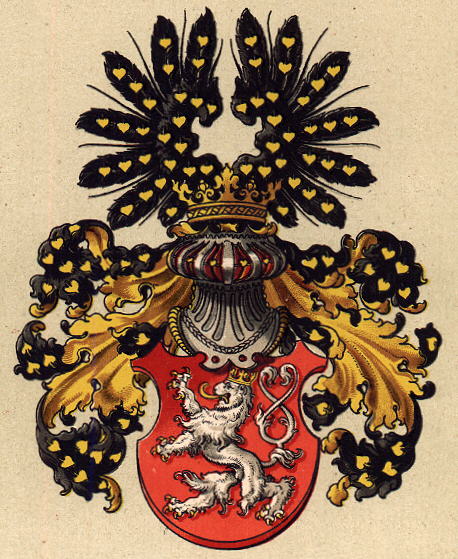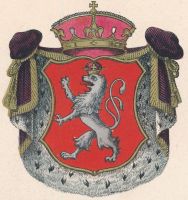Kingdom of Bohemia: Difference between revisions
Knorrepoes (talk | contribs) |
Knorrepoes (talk | contribs) |
||
| Line 23: | Line 23: | ||
<gallery widths=250px heights=200px perrow=0> | <gallery widths=250px heights=200px perrow=0> | ||
File: | File:Kingdom of Bohemia.hes.jpg|alt=Arms (crest) of the Kingdom of Bohemia|The arms in the [[Wapen- en Vlaggenboek Hesman|Wapen- en Vlaggenboek]] van Gerrit Hesman (1708) | ||
File:Bohemia1.jpg|alt=Arms (crest) of the Kingdom of Bohemia|The arms by Widimsky (1864) | File:Bohemia1.jpg|alt=Arms (crest) of the Kingdom of Bohemia|The arms by Widimsky (1864) | ||
</gallery> | </gallery> | ||
Revision as of 12:27, 30 July 2023
KINGDOM OF BOHEMIA
| Czech | blazon wanted |
| English | blazon wanted |
Origin/meaning
Bohemia was a Duchy, which became a Kingdom in 1196. The Kingdom is now mainly in the Czech Republic, but historically also parts of Poland, Italy and Germany belonged to Bohemia. On October 24, 1526, the Dukes of Austria acquired the Kingdom of Bohemia, which remained part of Austria-Hungary until 1919.
The oldest arms of the Kings of Bohemia showed in silver a black eagle, covered with golden tears (still used by the Italian region Trient). The silver double-tailed lion was introduced by King Ottokar II in 1249. Ever since the double-tailed lion remained on the arms of Bohemia.
The lion now forms part of the national arms of the Czech Republic, as well as many towns in the Czech Republic (such as Becov, Chotebor, Peruc and Zinkovy and Germany (such as Dudeldorf, Gräfenberg and Plech).
The arms in the Wapen- en Vlaggenboek van Gerrit Hesman (1708)
Literature : Ströhl, 1890


